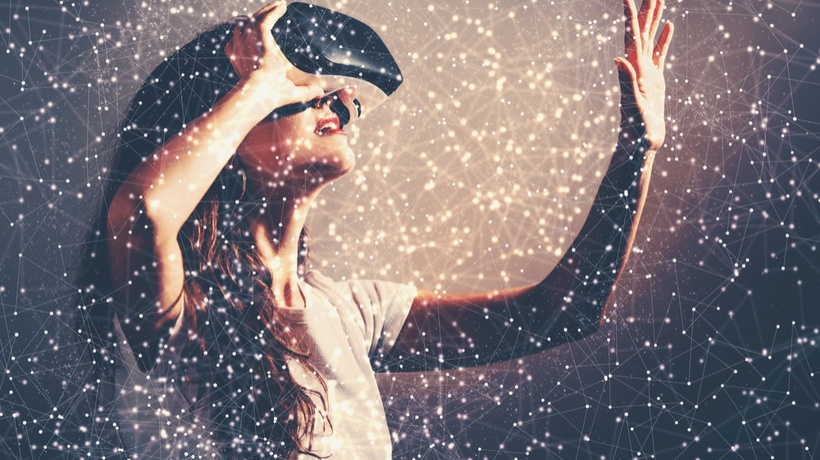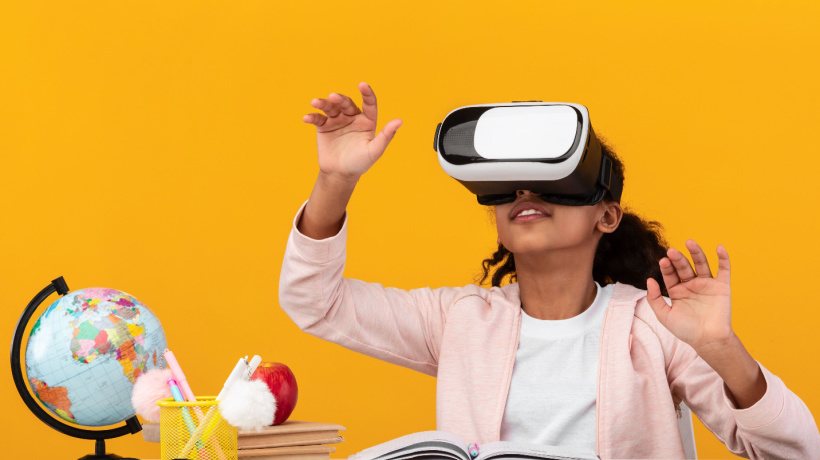What Place Do AR And VR Have In Learning?
Virtual reality (VR) and augmented reality (AR) have been a growing trend in many sectors for the last couple of years, including learning. So last week's eLearning Network’s event was a perfect opportunity to find out more about these technologies. The event titled What Place Do AR And VR Have In Learning? was held in London.
Here are 10 key points I took away from the event.
Tim Drewitt, Product Innovator at Kallidus, started the day with sharing Kallidus’ research with over 200 learning professionals on what they thought about using VR in learning.
Key Point 1: The 3 Criteria To Knowing If VR Is Right For Your Learning Project
- You want learner to be present in the experience.
- You want learners to be taken somewhere else.
- You want learners to touch something.
Key Point 2: There Are 5 Key VR Approaches
- 360 photos.
- 360 video.
- 3D computer generated where a learner can move around a VR environment.
- Fully immersive can move and touch things.
- Mixed reality - learners in groups.
The subjects which learning professionals think will mostly benefit from VR are technical skills (64%), health and safety and onboarding. Others include customer services and languages (16%).
Key Point 3: Why Should You Use VR?
- Stronger impact.
- Increases learning engagement, knowledge gain, and retention.
- VR speeds up competence.
- Has lower error rates.
- Learning style doesn't matter - VR suits all learning styles.
- Reduces cognitive load.
Key Point 4: When Should You Use VR?
- If you want learners to see the world through someone else's eyes.
- You want to offer accurate realistic simulations to solve real world problems.
- You want to demonstrate learning innovation and give your project some WOW factor.
You can download a full summary of Kallidus' VR research here.
Key Point 5: Use VR As A Hook
Overall VR in learning is not about creating an entire learning course in VR. It's about using VR as a hook to support other learning resources and materials, In a nutshell – as part of a blended approach. For a health and safety awareness course you could use VR to take learner into a hazardous environment and ask them to spot the hazards around them in a few minutes. This gives a sense of urgency and time pressure which you might feel in the real world.
Tim shared an example of a project where a client had 150 slides of technical content which was reduced to 7 minute VR experience.
Key Point 6: Tools For Creating Your Own AR
AR, on the other hand, is content on a phone, tablet or headset which is superimposed on top of a real world view. Content is activated by a trigger image e.g. QR code.
Tools which you can use to create your own AR content include:
- Layar.
- ZapWorks.
- Blippar.
Joanna Webb, Head of Immersive Learning Design and Development at Pearson, shared a project she is developing creating apps to use with Microsoft Hololens. Hololens is the first self-contained, holographic computer, enabling you to engage with your digital content and interact with holograms in the world around you. Here's me trying out the Hololens:

Key Point 7: Ways To Use Hologram Content
- Visualize concepts.
- Collaboration – where learners and teachers share the same space and see and learn from each other.
- Experiential learning e.g. nurses looking at a hologram patient and learning how to treat the patient.
Key Point 8: 5 Challenges Of Using Holograms
- Takes about 15-20 mins to learn the air tap gesture you need to use to control the content.
- Can be problems with synchronization of the device – e.g. doesn't work if there are complete blank walls.
- Need to train learners in how to use the lens and control the content.
- Ask if there is a real learning need for this technology? Are you creating something that learners are really learning or just excited about the technology?
- Technology is very expensive at moment – one Hololens headset costs over £2,700.
Liz LeCompte, Co-founder of Digitalnauts, talked about the following 5 common myths of using VR in eLearning.
- It’s too expensive: Actually headset costs vary from cardboard headset at £10 to Hololens. There are headsets around £50 which offer a good range of features. So VR is not as expensive as you might think.
- It’s not accessible to everyone: Liz shared some data which highlighted that in 2016 approximately 6.3 million devices were shipped. So VR looks likes it's more popular than we think.
- You have to be an expert to create VR: Tools already exist to create VR. You can shift to creating VR content easily and quite cost effectively. One key difference is that when you're designing for VR you have to design for a sphere rather than 2D.
- VR is only for entertainment: So many industries are using VR for a range uses. From virtual tours to interacting in different environments. Other speakers also shared their experience of range of subjects and sectors in which VR is being used. So it’s not just for entertainment.
- Technology isn’t there yet: Actually it is. Technology is always evolving so it’s up to us as learning professionals to stay up to date.
Key Point 9: The Myths Are Just That – Myths
It seems that it might be easier than we think to use VR for learning. There will be challenges, yes. But like all new technologies, it’s about diving in and seeing where it will take your next learning project.
Key Point 10: What Does Creating VR and AR Content Mean For Learning Designer Roles?
This was a question asked by a couple of delegates. The response from speakers indicates that learning designers do need a high level of visual skills to create AR and VR content. As with other learning technologies, learning designers' skills will evolve. So if you are a learning designer, then think about ways you can develop your visual design skills.
VR and AR content does require other specialist skills too, such as CGI and programming. Organisations in the VR and AR space are investing in these roles so the shape of our eLearning teams will change.
Time to purchase a headset and have a go at designing I think.









